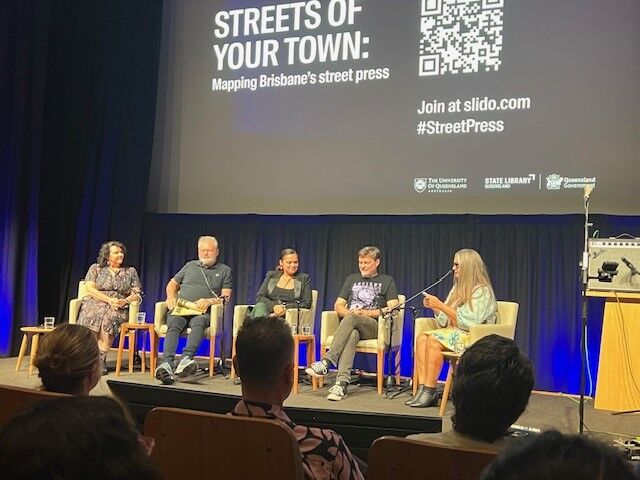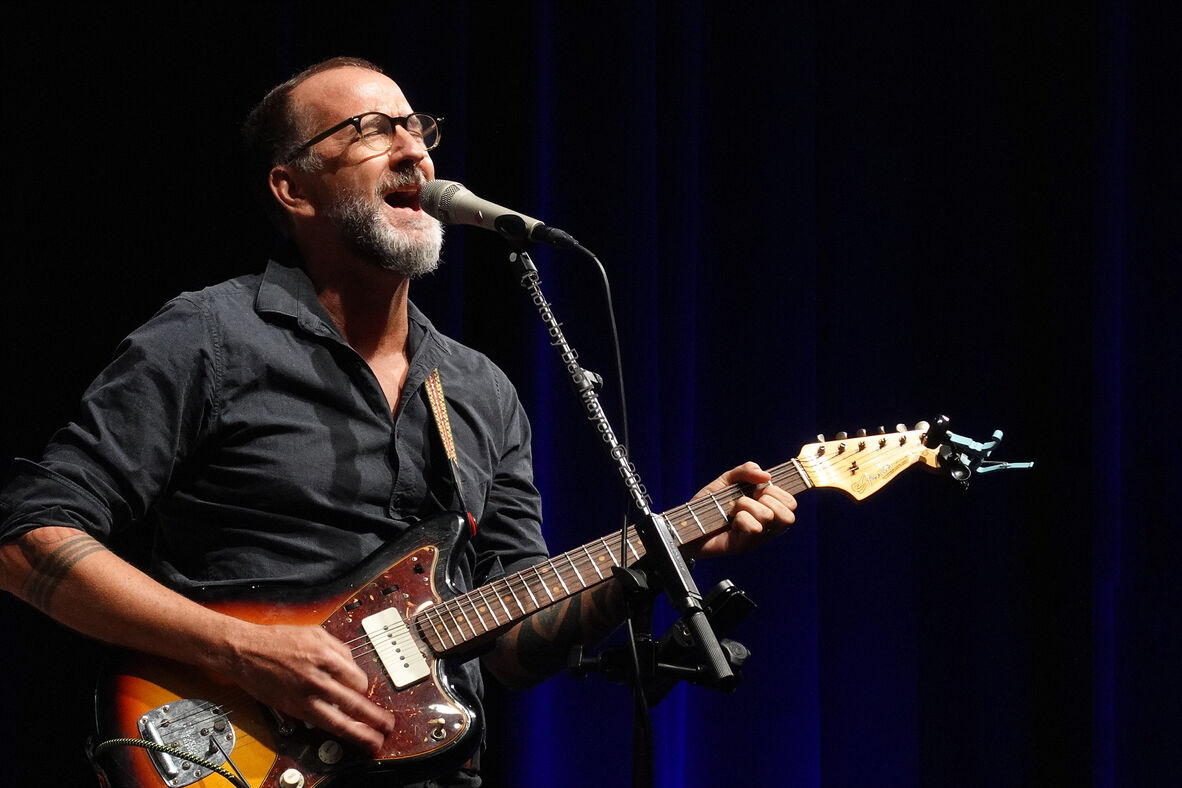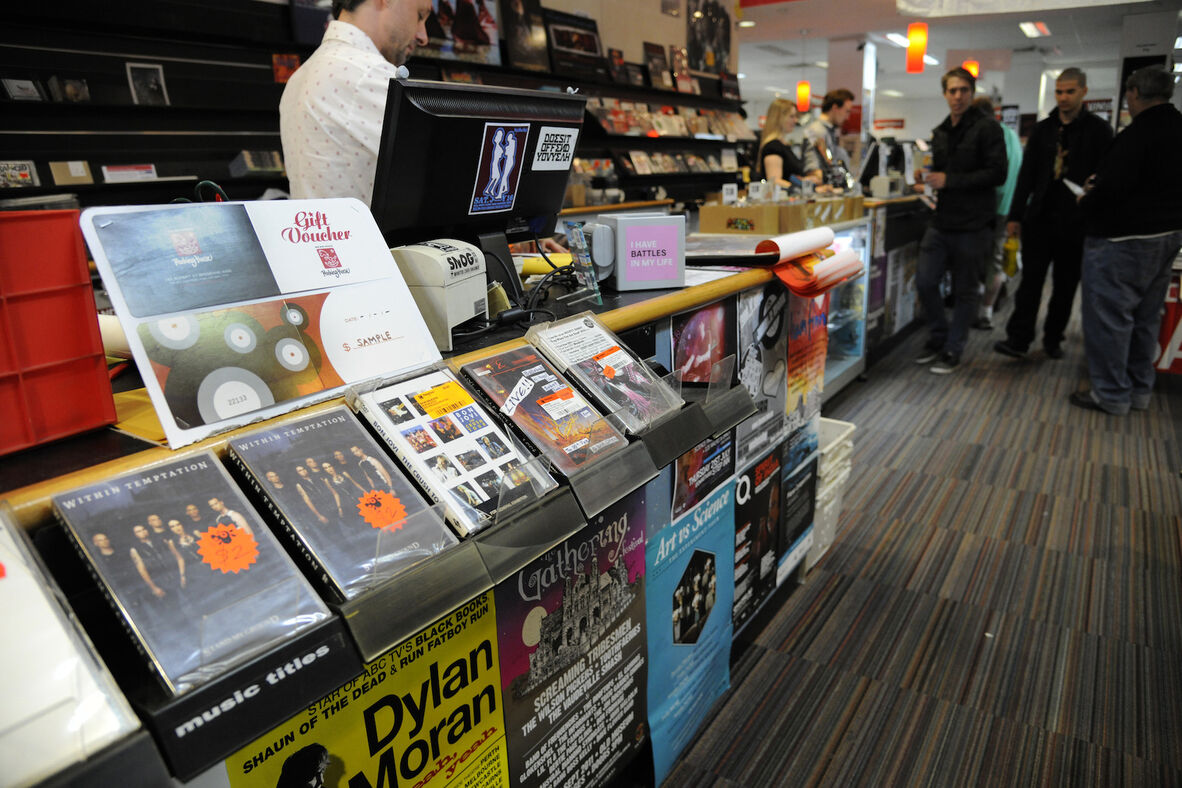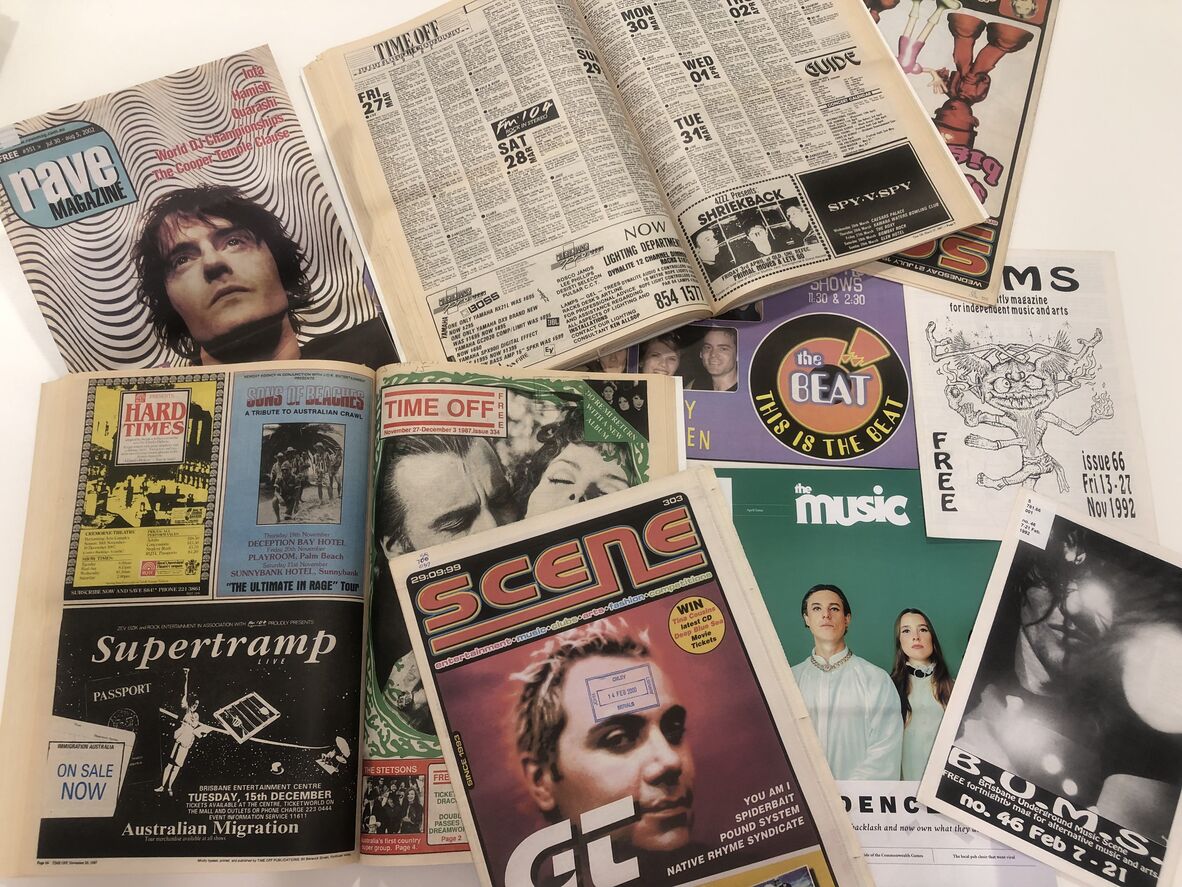We love a full-house, live music, and a lively panel of experts! On 28 February, State Library hosted Streets of your town: Mapping Brisbane's street press – to a packed audience of musos, writers, students and indie media enthusiasts. With so many people in the audience we couldn't get to all the questions on Slido, so Sean Sennett, founder of Time Off, and James Lees, writer, producer and musician, kindly offered to answer some of them.
A significant part of Brisbane's cultural history were the street presses of the 80s, 90s and 00s – independent magazines comprising gig news and reviews, theatre times, restaurant guides, classifieds and community news that helped diverse and passionate readers navigate their city.
Some of Brisbane's key figures in the independent media and music scene, past and present – Joc Curran, Mundanara Bayles, James Lees, Kellie Lloyd and Sean Sennett – gathered at State Library to share their memories and stories. They discussed challenges in the 80s and 90s, and how indie media such as Time Off, Scene, Rave, B.U.M.S., QNews, 4ZZZ and Murri Country connected and enriched people's lives but also how media such as Scenestr is still informing audiences today. The evening was book-ended by two special sets from local musician Ben Ely.

From L–R: Kellie Lloyd, Sean Sennett, Mundanara Bayles, James Lees and Joc Curran. Photo by Caroline Wilson-Barnao.
Audience member: What are the best ways for local music and arts to be promoted these days? The Courier-Mail used to do bits on local bands back in the day. Now there seems to be nothing.
Sean Sennett: Build a database of friends, family and supporters and use the database of the venue where you're playing. Build a following online via social media.
James Lees: I really lament the fact that there's so much less actual journalism in the most accessible media platforms, which are of course all digital social media. And many of the bigger newspapers have all but stopped doing arts pages or sections. Live music reviews are now largely a thing of the past too. I think this all points to going back to absolute grass roots and building a following though family and friends, and ensuring you are really great to work with when it comes to venues. As social media is such a visual medium, I always strongly encourage artists to invest in the best quality photographs and artwork/branding within budget – an amazing image or short clip will do so much of the work.
AM: How do you think the street press influenced graphic design of the time? And is there anything that still endures from that time in flyer design and poster design?
JL: There were definitely some strong design trends from various venues, and also from some of the music scenes. The Zoo always had very distinctive ads in the magazines, derived from some of the artwork that adorned the walls. This was also featured in many of their posters that The Zoo designed for their own shows (particularly the birthday shows), and also the monthly Zoo News zine. In a different vein, the artwork created by Paul Curtis (of Consume) was so distinctive, ghoulish and punk/horror-inspired, usually for local hardcore shows but also for international acts he was touring. This style also crossed over into the early Regurgitator artwork.
AM: Why do you think Rave and Time Off-type street presses haven't really translated to an online presence?
SS: They did initially. Both had forums and interaction with readers. Entire magazines were posted too. It was virtually impossible to make money out of ‘online’ then. When the magazines folded, so did the websites.

Musician Ben Ely performed live to open and close the event on 28 February. Photo by Deb Mayes.
AM: What was the impact of the arrival of the national street press in Brisbane? Like Triple J going national.
SS: Not great. But the internet was more damaging.
JL: It did feel like the end of an era, and my recollection is that it felt a lot less integrated with the local music and arts community.
AM: How did you sustain the press financially? The production over time got very polished – must have cost a few bucks. Advertising?
SS: Yes. All advertising. We [at Time Off] had a dedicated sales team. They were vital to the magazine’s success.
AM: What do you think has replaced the gaping hole left by the street press that still focusses on local artists?
SS: I don’t know. Every week someone tells me we need a street paper in Queensland.
AM: What was the process of putting together a street mag weekly? How did you get your information? How did you get it printed?
SS: We had an editor, sales people, graphic artists and a team of freelance writers. Once the paper was sent to our printer, it would then be distributed. Most information and interview requests came via record company and film publicists. Local artists contributed their details to the gig guide and requested stories.
JL: One of my roles at Rave Magazine was known as 'compositing' – preparing a master of each page of the magazine at A3 size on a sheet of bromide paper. Each page would be designed on computer (we used corelDraw) and then each component of each page would be printed out – articles, images and ads, and these would be cut out and adhered to the bromide paper. I used to cut these out with a scalpel and also lay in other graphic elements like lines, borders, headers and page numbers – all by hand. Each bromide page would then be compiled in order and sent to the printer. This all happened late into the night every Tuesday. I think I was paid around $20 to do this (in 93/94) and our editor graciously supplied dinner if memory serves me correctly!

All speakers had very fond memories of Rocking Horse Records, which used to occupy shop space in the Albert Street mall. Photo by Leif Ekstrom (2011).
AM: How far and wide was the street press circulated? To what type of outlets?
SS: Pubs, clubs, bottle shops, on campuses, in cafes and record shops … for Time Off, it was all the way from Byron to Rockhampton.
JL: For the LGBTIQ+ paper Brother, Sister (and then QNews), the distribution strategy was very inner city centric – all the clubs, sex-on-premises venues and major cafes/music stores. Some key suburbs were New Farm, Fortitude Valley, the City, West End, and Paddington. Beyond this it went to very key locations in the mid and outer suburbs. We also distributed to a few spots on the Sunshine and Gold Coast. Time Off went to many of these same locations and chief among these was Rocking Horse Records that always moved at least 300-400 issues per week.
AM: Balancing advertisers and editorial is tough for free press. Can you recall any interviews that you had to grit your teeth to get through?
SS: In the early days I’d interview a lot of unsigned bands. Occasionally you’d get someone who had ‘put you off personally’, but you’d try and stick to the music. Ted Nugent offered to send me his personal hunting magazine … not something I was interested in! Usually if it was an artist who wasn't your personal cup of team you could also find someone on the staff who was into it.

Just a few of the thousands of publications held in State Library's collections. Photo by Stories and Ideas.
Missed the evening? Catch up by watching the video here.
Want to see what's in State Library's collections? Find photos, posters and copies of street press magazines in our archives here, here and here. You can also Ask a Librarian for specific research help anytime.
This event was held in partnership with The University of Queensland and AustLit as part of their Brisbane Street Press and Australian Rock Music database projects. AustLit will house information on different street presses and include links to interviews with writers, editors, and other local identities involved with its creation and distribution. You can add your own memories and stories here.
Stories and Ideas would like to thank the research project staff at UQ, particularly Dr Caroline Wilson-Barnao, Dr Natalie Collie, Dr Richard Murray, Mr Paul Smith and Dr Catriona Mills. Thanks once again to our audience, to Sean and James for their answers, and to all the panellists for a terrific event.
Comments
Your email address will not be published.
We welcome relevant, respectful comments.